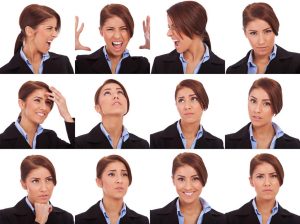
North Shore Dance Society
Have you ever gotten a ‘feeling’ about someone? Maybe you thought they were attracted to you, or you got a ‘bad vibe’. We get a lot of these intuitions from their subconscious body language. Dancing on the other hand, uses body language deliberately to tell a story.
It’s worth mentioning that some dance styles can express different feelings with the same movement, so ask an instructor if you aren’t sure. Also, some movements express things you might not want to express! Can you guess which ones?
The Hips, and Core:
Neutral position, stretched upwards: Strong, rigid.
Sharp, strong hip movements: Powerful and sexy, confident, or adversarial, traditionally masculine.
Smooth, rolling hip movements: Sensual, freedom, fluid, traditionally feminine.
The Legs, and Feet
Sharp, longer steps: Passionate, powerful, aggressive, confident or arrogant, driven.
Smooth, continuous steps: Graceful, elegant, classy, romantic, emotional, possibly sorrowful.
Thighs crossed: Tension and anxiety, shyness, defensive.
Pushing down into floor with feet: Grounded, solid, earthy, strong.
Bouncing on balls of feet: Light, whimsical, energetic, fun.
Tapping, or styling with toes: Similar to above; also graceful and classy.
Standing sideways to partner: Fencing pose, adversarial.
General Movement
Traveling smoothly and low to ground: Stealthy and strong, as in a tango. Concealed power.
Lifting feet up and down off the ground while traveling: Military, stiff, jerky, explosive power if done quickly.
Leading movement from chest: Strong, confident, well-poised.
Leaning away from direction of movement: Hesitant, uncertain, nervous of the object they are moving toward.
Combining Body Parts
As we talked about last time, we’re trying to align our whole body to send the same message. For example, we might convey power with sharp, long steps, a still frame and torso, leading from the chest, with head turned slightly up and arms making large, open movements.
Romance is another example. We can express this in a dance with smoother, continuous movement in the legs, more flexible and fluid hips, and softer arm gestures. Film yourself dancing, and watch your own body language. What were you trying to convey? How successful were you?
Author: Ian Crewe
North Shore Dance Society